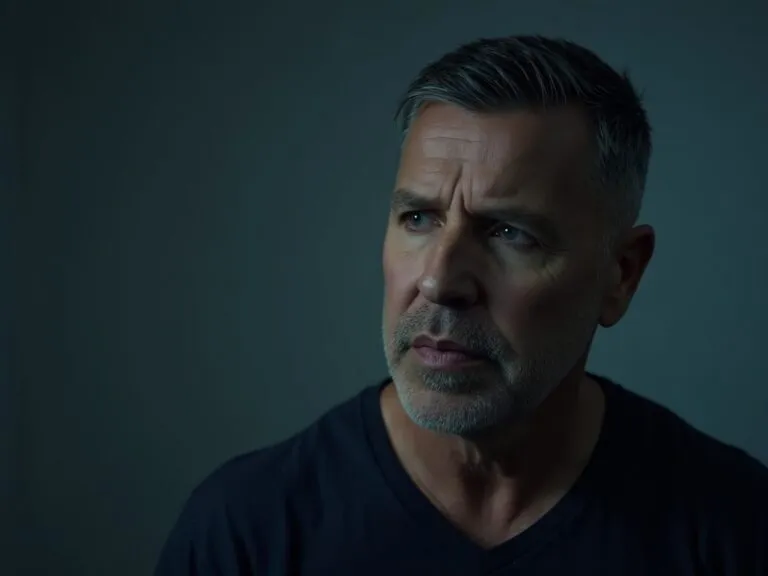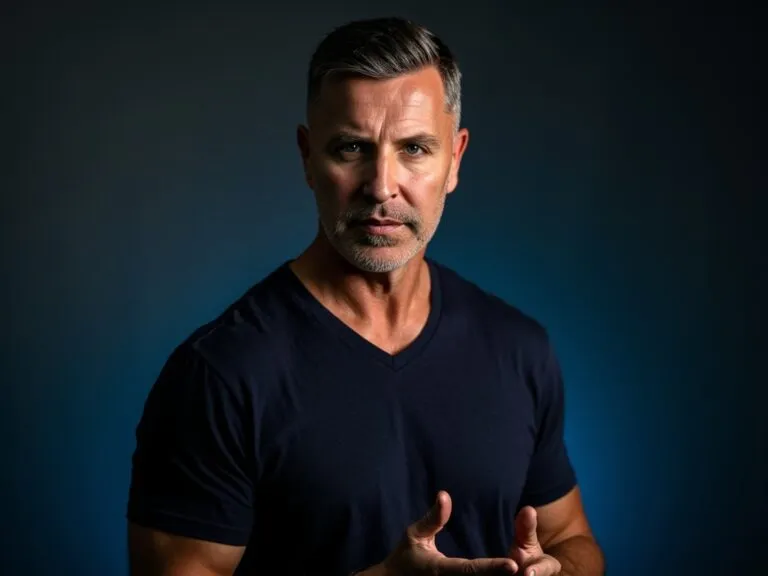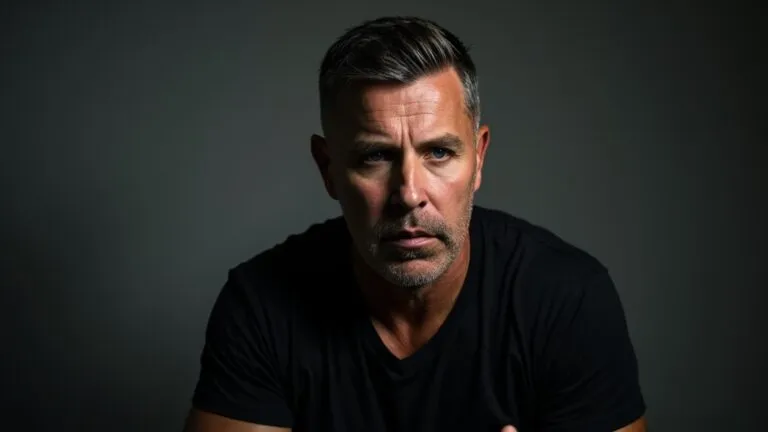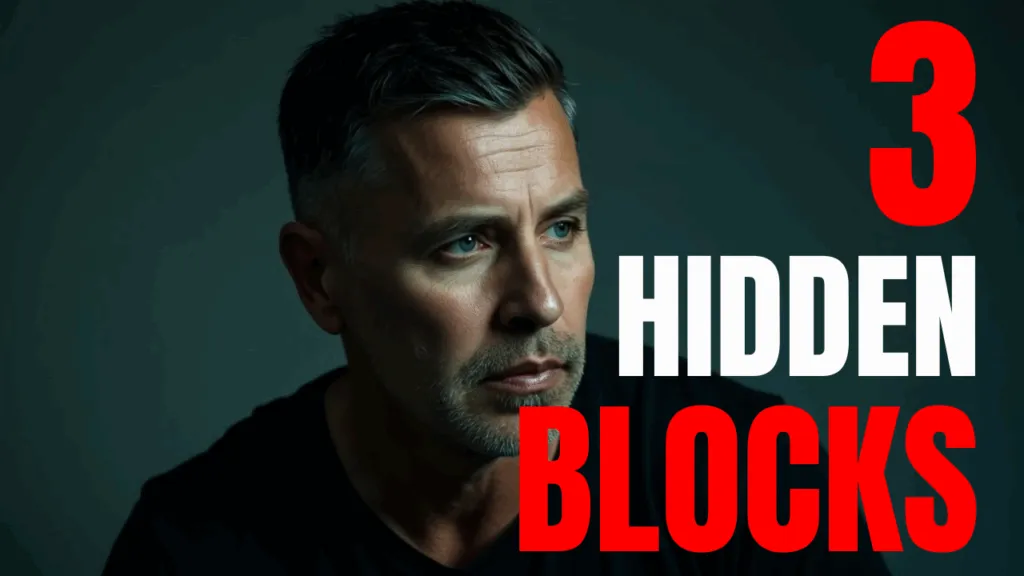
Ever felt like you were pressing the accelerator on your goals, but getting nowhere?
You tell yourself this time it’ll be different. You’ve set the vision. You’ve mapped out the plan. Maybe even joined the program or downloaded the tracker. But somehow, days go by… then weeks. And you’re still stuck in the same spot.
It’s not a motivation problem. It’s not that you don’t want it badly enough. And no, you’re not lazy.
What you’re feeling is resistance. Resistance sabotaging your success.
And if you’re in your 40s, 50s, or beyond, resistance can feel even heavier, like dragging a backpack full of bricks uphill. Because now, your dreams don’t just need action… they need energy. And energy is something you’re probably already short on.
That’s where this conversation begins.
In this article, I’ll walk you through what resistance really is, how it manifests in your day-to-day life (often without your awareness), and — most importantly — how to overcome it so you can finally move forward.
This is the same method I used myself — when I felt stuck in a corporate job that no longer fit and wanted something more. It’s also the same process I teach in my coaching program to professionals, parents, and midlife seekers who are done pushing and ready for progress.
Let’s start by understanding what resistance really looks like under the surface.
Resistance Isn’t the Enemy — It’s a Signal
Imagine getting into your car, ready to head somewhere important. You start the engine, hit the gas… and press the brake at the same time.
What happens? You don’t move. Or if you do, you’re just spinning your wheels, burning fuel, and wearing yourself out.
This is precisely what happens when you’re trying to move towards a goal — like starting a side business, getting back into shape, or changing careers — but resistance is still active in your system.
From the outside, it may be procrastination, akin to flaking on your commitments. Like starting something, then stopping. But underneath, it’s often something deeper — emotional blocks, limiting beliefs, or internal conflict pulling you in different directions.
Take one of my past clients — let’s call her Amanda. She’d spent decades in a successful career and finally wanted to start her own practice. But every time she sat down to take the next step — whether it was setting up her website or reaching out to potential clients — she’d freeze.
Not because she didn’t care. But because deep down, she still carried a fear of being seen. Of failing. Of getting it wrong in public.
That’s resistance.
And no amount of to-do lists or motivational quotes can overcome it — unless you address it at its root.
The good news? Resistance can be removed. Quickly. You don’t have to push through it for months or years. You just need the right tools — tools that work on both the mind and the body.
In the next section, I’ll break down the three hidden types of resistance that most people never realise are holding them back — and show you exactly how to clear them.
But before we get there, let me ask you:
Have you ever felt like you’re working hard, but not making progress?
If so, it’s not a flaw. It’s feedback.
Let’s learn how to listen to it — and finally move forward.
The 3 Types of Resistance That Keep You Stuck
If resistance is the brake pedal, then it helps to know what exactly is pressing down on it.
In my coaching practice, I’ve seen time and again that resistance doesn’t take a straightforward form — it wears many disguises. You might feel tired, distracted, overwhelmed, or even numb. But underneath those feelings are three hidden forces that quietly block progress.
Let’s walk through them.
1. Trapped Emotions: The Invisible Anchor
These are the emotions you felt long ago… but never quite processed.
Fear. Shame. Guilt. Not-good-enough-ness.
They stay stored in the body like old files on a computer. You don’t see them on the desktop, but they’re clogging up the system.
Here’s the thing: emotions don’t just “go away.” They wait — and they flare up the moment you try to do something bold.
One of my clients (we’ll call him James) wanted to leave his executive role and start a business that aligned with his values. But every time he came close to taking action, he’d find an excuse. After a few coaching sessions, it became clear that a single moment of public embarrassment back in high school had planted a fear of being judged.
He wasn’t afraid of starting. He was fearful of being seen.
When we released that emotion using a method called the Universal Freedom Technique, he felt as though the weight of the past was gone, in just one hour.
He now runs a thriving business that lights him up.
2. Limiting Beliefs: The Stories That Run the Show
These are the quiet scripts running in the background of your mind:
- “I’m not good enough.”
- “I’m too old.”
- “I’ll probably fail.”
- “Who am I to do this?”
Limiting beliefs are like smudged glasses — they colour everything you see. Even if an opportunity is right in front of you, you won’t act on it if you believe deep down you don’t deserve it.
Michelle, another coaching client, appeared to have it all together. But inside, she constantly battled impostor syndrome. She had decades of experience, but the thought of starting her own thing terrified her.
Through targeted mindset work, we dismantled the belief that she “wasn’t expert enough” — a story she’d picked up early in her career and never questioned.
Once that shifted, she finally launched her coaching service and booked her first client within a week.
3. Values Conflicts: The Tug-of-War You Don’t Realise You’re In
This is a significant one, and it typically appears most in midlife.
- You want flexibility… but also financial security.
- You want to slow down… but you’ve built your identity on being busy.
- You want purpose… but also freedom from pressure.
These aren’t just preferences. They’re internal conflicts, and they cause paralysis.
When we fail to resolve these opposing desires, we remain in limbo. Not moving. Not choosing. Not progressing.
Think of it like this: you’re on a boat with two anchors down. Doesn’t matter how hard you paddle — you’re not going anywhere.
A former client (let’s call her Karen) faced this head-on. She wanted to leave her job and start her dream business, but she also feared letting her team down and losing her “stable” income.
Once we worked through the values conflict and got clear on what mattered most in this season of her life, the fog lifted. Within a month, she had a plan and a launch date.
Here’s the Punchline:
Resistance isn’t permanent.
It’s not part of your personality.
And it’s not something you have to manage for the rest of your life.
You simply need to remove it, using tools that address both the emotional and logical aspects of your brain.
That’s what I teach inside my coaching program. Because once the resistance is gone, everything else starts working the way it’s meant to.
In the next section, I’ll show you why trying to push through won’t work — and what to do instead.
Removing Resistance Is the Step Most People Skip — And It’s Why They Stay Stuck
Here’s what I’ve observed repeatedly.
People become clearer about what they want, perhaps even creating a vision board or committing to a new goal.
They take some action.
Then, suddenly, everything stalls.
Motivation drops. Old habits sneak back in. Life gets busy. Self-doubt returns. And the goal — that thing they were so fired up about — quietly slips to the background.
Sound familiar?
That’s not a willpower problem.
That’s resistance.
And most people don’t know how to deal with it, because they often don’t even realise it’s there.
That’s why I teach resistance removal as Step 2 in a four-part framework I use with my private coaching clients — a framework designed to help you rewire your mindset and reset your life.
And here’s the truth:
If you skip this step, the other three won’t stick.
You can have the best habits in the world — but if fear is still hiding under the surface, you’ll eventually quit.
You can create the perfect plan, but if your beliefs say “I’m not cut out for this”, you’ll sabotage it.
You can even get accountability — but if your values are in conflict, you’ll find reasons not to follow through.
That’s why resistance removal is the real starting point of change.
Let’s Recap What You’ve Just Learned
- Resistance isn’t a sign of laziness or a lack of motivation. It’s a sign your system is trying to protect you.
- There are three hidden types of resistance:
- Trapped emotions
- Limiting beliefs
- Conflicted values
- These patterns keep your foot on the brake, even when you want to move forward.
- Most people try to push harder. What actually works is removing the brake.
Once you do that, everything accelerates. Your vision becomes clearer. Action becomes easier. You stop trying to force change and start feeling like it’s finally happening.
And you don’t have to do it alone.
Next Step: Want Help Releasing What’s Holding You Back?
If you’re ready to take your foot off the brake — and finally gain some real momentum — I invite you to apply for my Rewire Your Mindset 8-Week Coaching Program.
This isn’t a course. It’s a hands-on process where we:
- Uncover what’s actually been holding you back
- Release old patterns at the root, not just the surface
- Install new ways of thinking and acting that feel natural, not forced
- Support you through every step with authentic coaching, not generic advice
And best of all, you’ll be guided through all four steps of the Mindset Rewire Framework.
Resistance removal is just one part of the process.
But it’s the piece that unlocks everything else.
Click here to apply — if you’re serious about change, I’d love to meet you on a free Zoom call and see if it’s a fit.
References
- Dweck, C.S., 2006. Mindset: The new psychology of success. New York: Random House.
- Neff, K.D., 2011. Self-compassion: The proven power of being kind to yourself. New York: William Morrow.
- Dispenza, J., 2012. Breaking the habit of being yourself: How to lose your mind and create a new one. Carlsbad, CA: Hay House.
- Sinek, S., 2009. Start with why: How great leaders inspire everyone to take action. London: Penguin.
- Schwartz, B., 2004. The paradox of choice: Why more is less. New York: Harper Perennial.
- Brown, B., 2012. Daring greatly: How the courage to be vulnerable transforms the way we live, love, parent, and lead. New York: Gotham Books.
- Robbins, T., 2001. Awaken the giant within: How to take immediate control of your mental, emotional, physical and financial destiny!. London: Simon & Schuster.
- Covey, S.R., 1989. The 7 habits of highly effective people: Powerful lessons in personal change. New York: Free Press.
- Deci, E.L. and Ryan, R.M., 1985. Intrinsic motivation and self-determination in human behavior. New York: Plenum Press.
- Goleman, D., 1996. Emotional intelligence: Why it can matter more than IQ. London: Bloomsbury.






